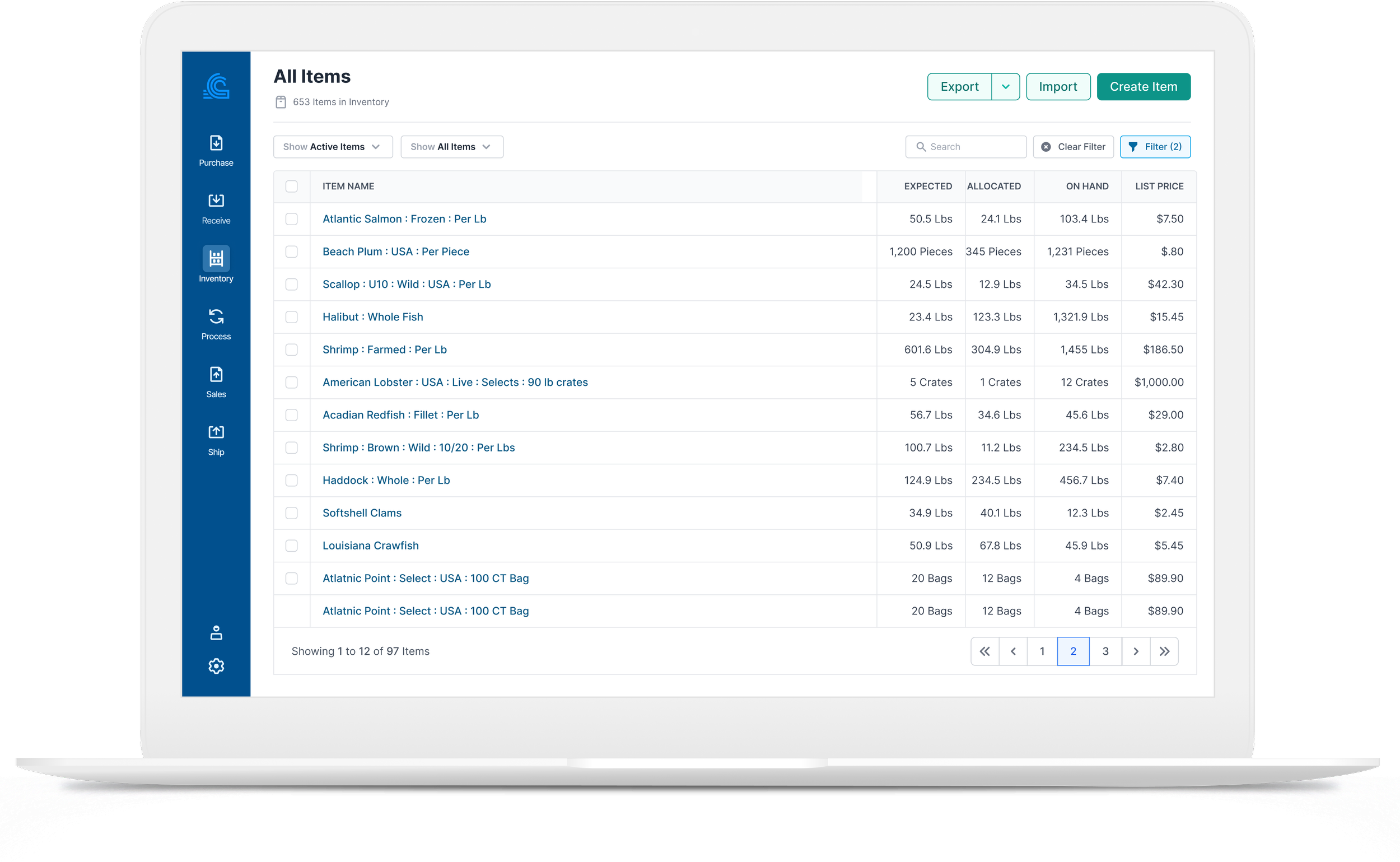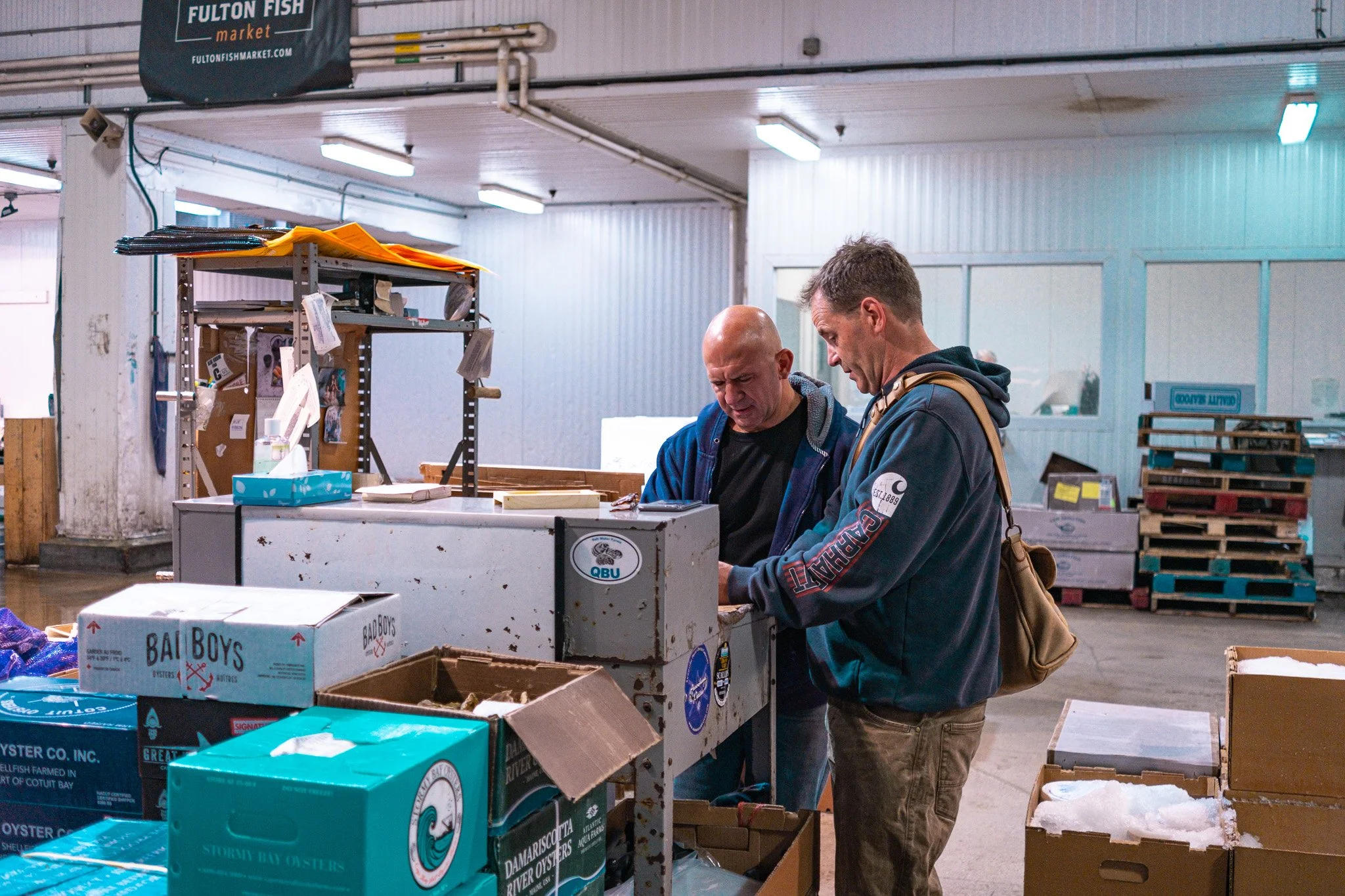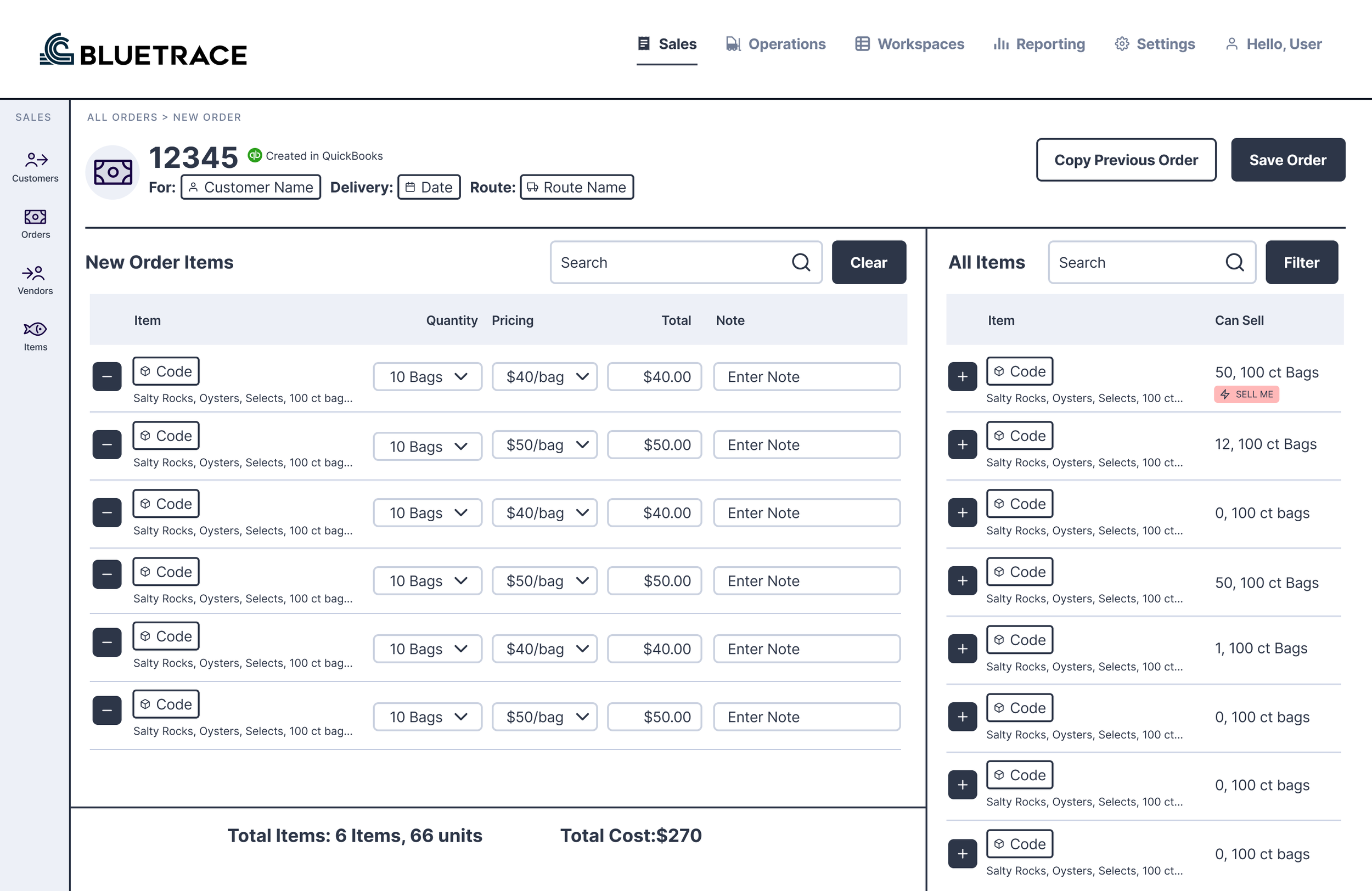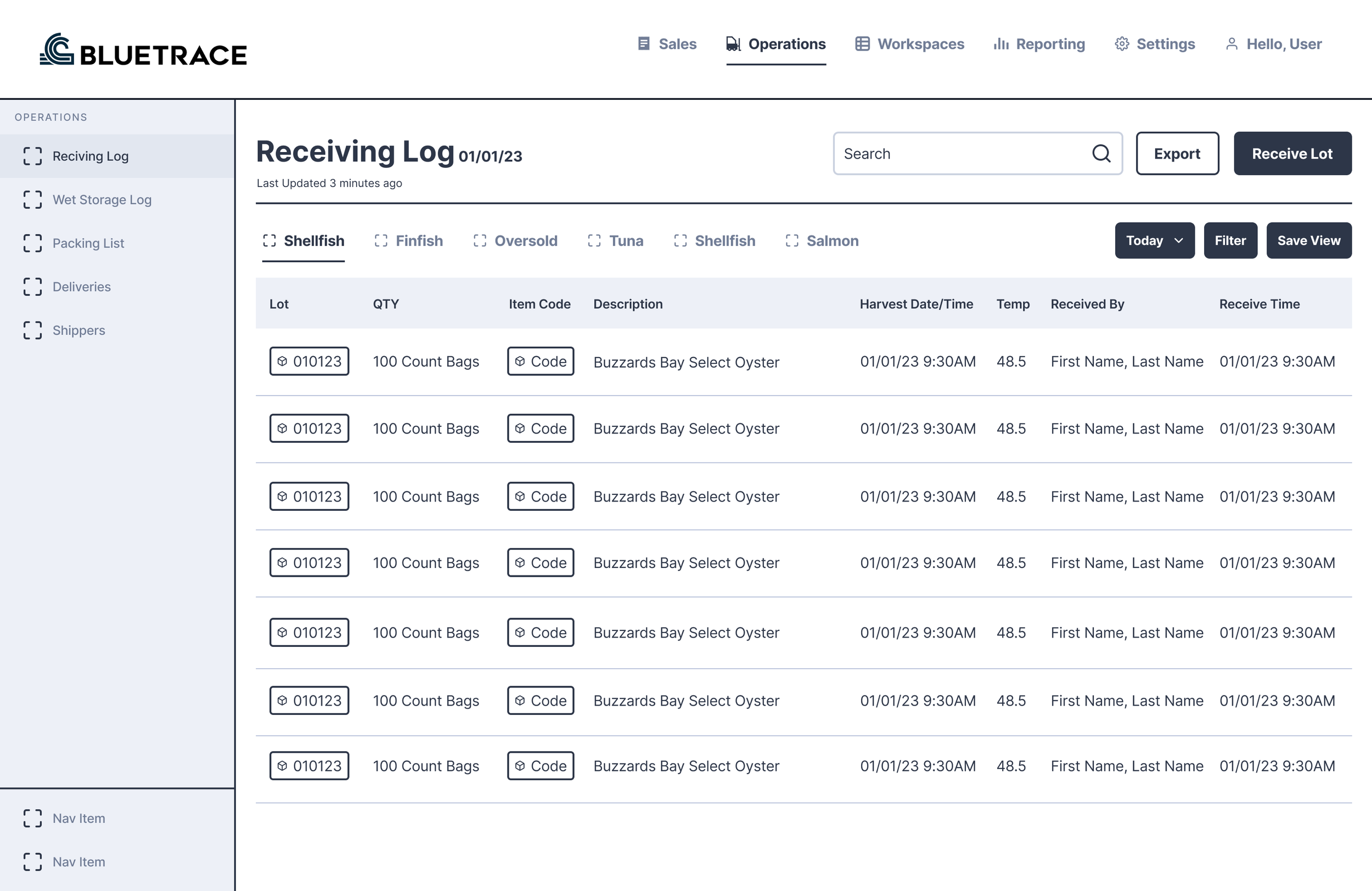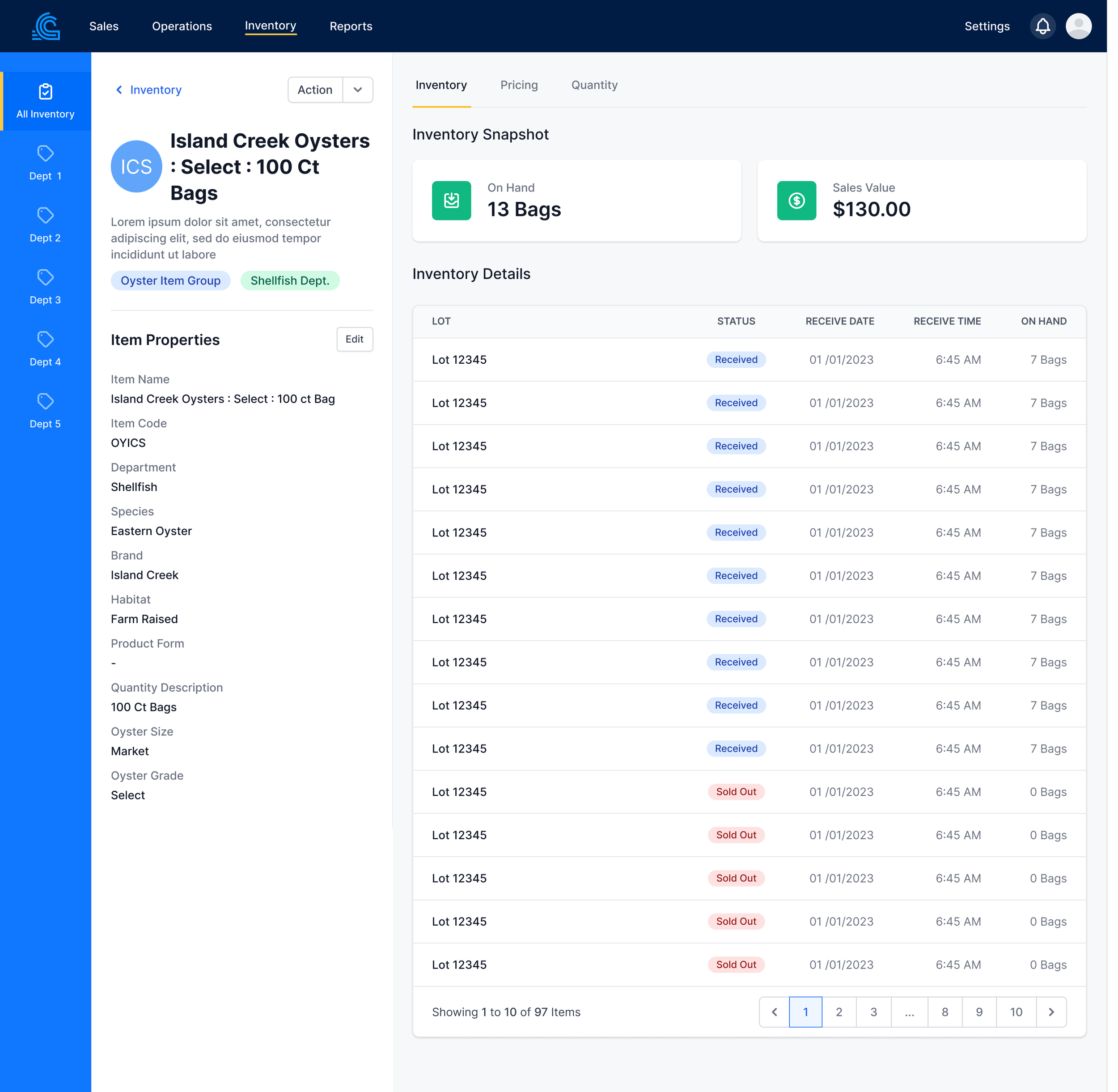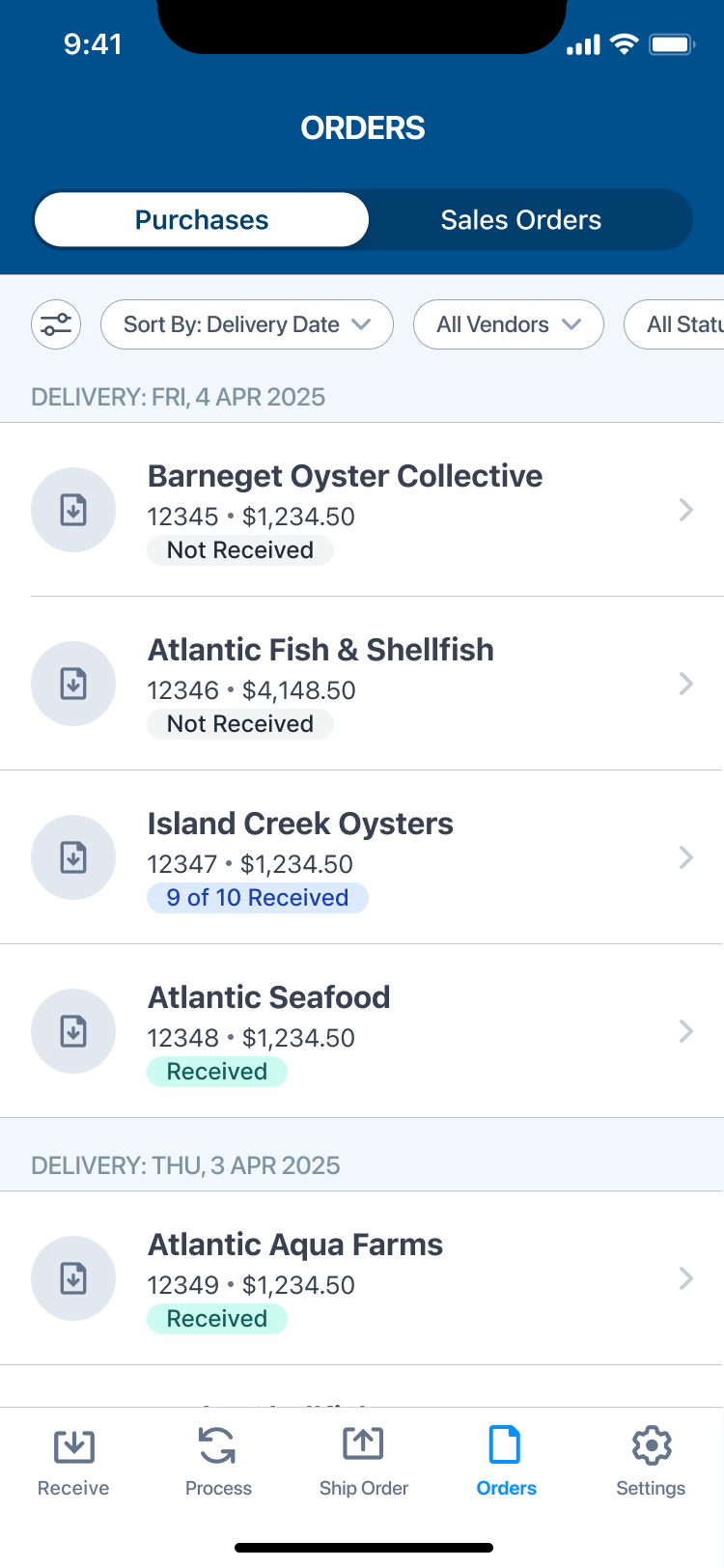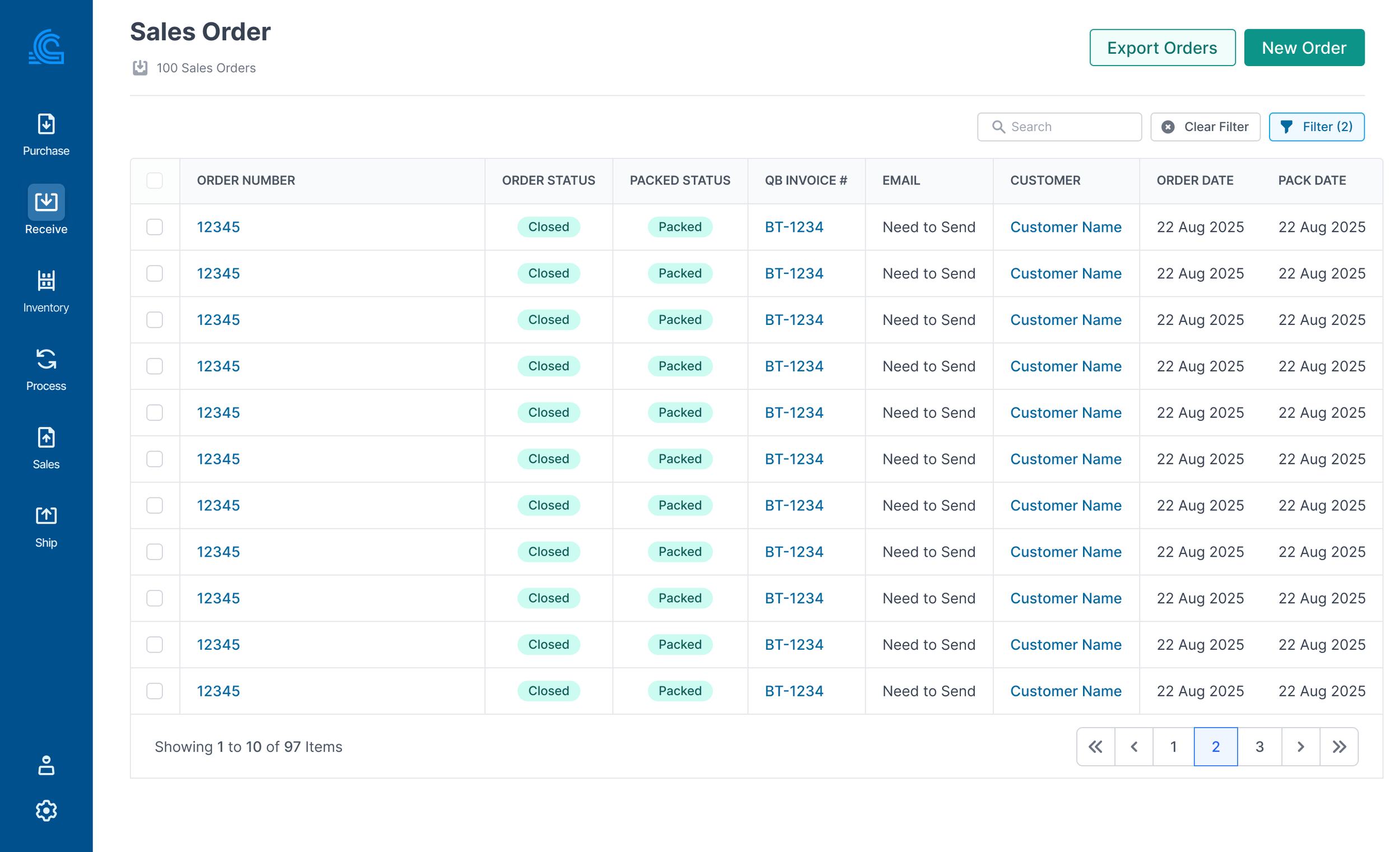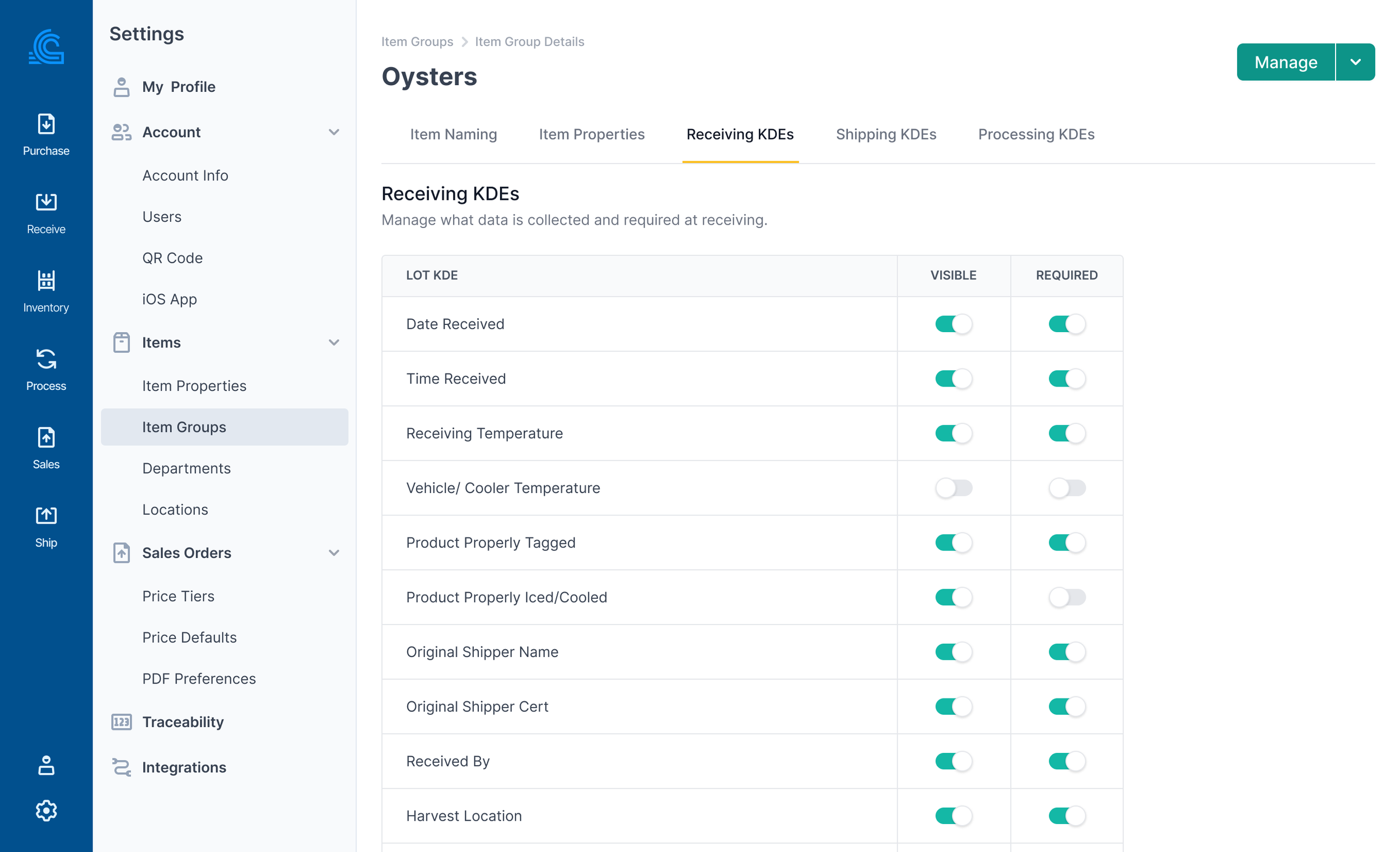BLUETRACE
An Inventory Management & Traceability Platform Purpose Built for the Seafood Industry.
Challenge
With no modern easy-to-use inventory management system built for the unique demands of seafood, operators are forced to choose between expensive consultant driven on-prem legacy systems, spreadsheets, or handwritten form and files. There must be a better way.
Goal
Offer a modern all-in-one inventory management platform for seafood operations that could be setup and learned in weeks not years.
Bring best in class “consumer UX” to a forgotten segment and help owners, managers, and folks working on the line use technology to grow their bottomline and improve their day to day.
Constraints
Seafood is a “rapidly depreciating product” that doesn't sit on a shelf; product is sold before its even received.
Highly regulated storage, traceability, handling and labeling rules.
Lot-to-Lot traceability through what is essentially a manufacturing process.
Table Stakes CRM features (contacts, companies, orders etc).
High degree of workflow variability among and between seafood businesses/segments.
High degree of form factor variability: Web: Office vs. Mobile:Floor
Process
Customer Development at 3AM
At BlueTrace, our journey started with more than 400 seafood businesses using our Print & Log product. Over time, one message came through loud and clear: distributors, processors, and larger producers needed better tools to manage inventory on the commercial side of their operations. By listening closely and talking with dozens of customers often on-site at odd hours, we recognized the bigger opportunity.
If you ever have a chance to visit Fulton Street Fish Market in the Bronx at 3am, Take it!
Wireframe and Design Vision
When we set out to build Inventory Management, we started by studying the landscape, looking at competitive products both inside and outside the seafood industry. From there, we identified the essential bones and scaffolding that every inventory system needs and overlaid those fundamentals with the requests and goals we were hearing directly from our customers. They mostly lined up, but with a need to seafood specific perspectives on things like the speed of inventory turnover.
The result was a clear design vision and a set of rough wireframes and a product architecture that showed how V1 could come together: simple, practical, and purpose-built for seafood distributors and processors.
Beta Visual Language
Once the core architecture and early wireframes were in place, we turned our attention to the visual identity and language. We developed the product’s UI in parallel with our overall brand to ensure a consistent look and feel across everything we build. The goal was NOT something super polished. We still didn’t know a lot about what we didn’t know, so we really just wanted to focus on usability, efficiency, and something that looked like where the brand was headed.
By using the Tailwind system as our foundation, we avoided reinventing the wheel at the component level, while extending and customizing components where needed to address the unique challenges of seafood distribution and processing. The result: a product that feels familiar but also distinctly BlueTrace.
V1: First 20 Customers and Product Refinement
The first 20 customers who joined us on BlueTrace Inventory Management weren’t just customers—they were partners in building the product. From the beginning, we worked shoulder-to-shoulder with them, often on a daily basis, as they configured their systems, set up their workflows, and began running their businesses on the platform. Those early days were about building a foundation together: listening intently, sanding off rough edges, and making real-time decisions about where to invest our time and effort.
Short term, we focused on eliminating any barriers that could slow down onboarding or day-to-day use. (e.g. form field issues, not being able to enter values in the main tables)
Medium term: we prioritized improvements that gave our partners more confidence that table-stakes efficiency features and experience improvements were on the way. (e.g. Sales Orders, Purchases, and a QuickBooks integration)
Long term: we uncovered entirely new opportunities that expanded our vision for what the product could become (e.g. Order Intake, AI Agent workflow automation)
As the product grew so to did the complexity, and so evolved a carefully designed user-experience object model. We mapped out current and future core objects in the system (items, lots, orders, purchases, and shipments) along with their key characteristics, core actions, and relationships to one another.
This work wasn’t just about making sure each object could do its job; it was about creating the right “connective tissue” so that everything fits together, a whole greater than the sum of its parts. By doing this upfront, we avoided duplicating features across different areas of the product and abstracted common interactions like export, save, update etc.
V2: UI Enhancement, Icons, and a New Nav
With V2 of BlueTrace Inventory Management, we focused on refining the experience after adding major new capabilities like sales orders and purchase orders. Working closely with our customers, we learned:
How critical information density is in their day-to-day operations,
How much they rely on data tables that behave like spreadsheets—only faster and easier.
The global nav (sales, operations, items) was efficient despite matching our object model, so we needed a new nav to eliminating slowness, unnecessary clicks, and to make it simpler to move through the system intuitively.
We needed our own icons. We had some very specific icon needs (blast freeze? shuck?) that and off the shelf library couldn’t really handle.
V2 delivered answers to those questions and more, with a sharper, more modern visual design that reflects the quality of our brand and meets the standards of a best-in-class UI.
Results
95% Retention
40+ Customers
800k ARR and growing
Qualitative praise for system that is easy to use, that workers actually use and want to use.
